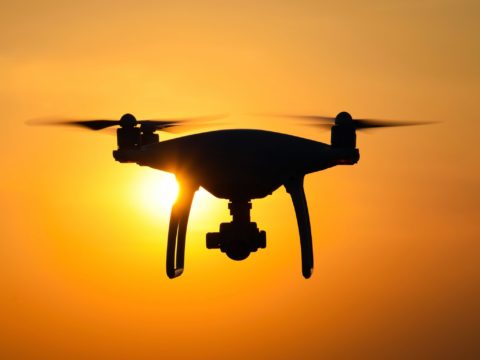As technology gets smarter, so do fraudsters. Bots and fake ad traffic are causing corporates to lose more than 40% of their investment, according to the recent AppsFlyer report, The State of Mobile Fraud: Q1 2018.
Video and mobile formats of ads have brought a new playground for fraudsters to engage in making fake ad traffic through content scraping websites. They also use bots to auto-click ads or present ads outside of a user’s view.
“Bots, developed by fraudsters, are deployed to engage with the ads, which leads to a massive dip in viewability,” Business Line quoted Rahul Vengalil, CEO of What Clicks, a digital media audit firm.
According to the Media Rating Council (MRC) standards of viewability, 50% of the ad space must be seen by a human for one second in case of a static ad and two seconds in case of a video, to call an ad ‘viewed’.
“Since ads are paid on cost per mile impressions, the more the impressions, even if fake, the more the payment,” adds Vengalil. “Brands that are not using any safeguarding tools might as well say goodbye to 30 per cent of their investment before the campaign even starts.”
Vengalil says because of ad fraud, the rate of viewability has come down to 12%. “If a company has paid INR 1 crore for digital advertisement on a particular publisher’s website, it would have lost INR 88 lakh,” he said.
Here’s what you need to know about Facebook’s latest data breach
According to the AppsFlyer report, mobile app marketers are bearing the brunt of ad frauds. The report reviewed over 10 billion installs of 6,000 apps and found that mobile app marketers had to deal with 30% more fraud in the first quarter of 2018 than the quarterly average last year. The report also reveals that with media costs and third-party attribution, fraud has already touched $700-$800 million, and this is just the first quarter! The report recorded a fraud rate of 11.5%, a 15% hike since the last study.
According to the report, in the APAC region, Singapore was hit most in mobile ad fraud, with app install fraud rates rising to 27%. India, Indonesia, Hong Kong, and Malaysia, were also in the line of fire. Countries like India and Indonesia are targeted because of the sheer volume of numbers. China doesn’t figure in the list in spite of being one of the biggest regions in APAC, because it doesn’t have a Playstore, and users install apps through individual app stores.
However, countries, such as Japan, Germany, US and UK, are also chosen because of their relatively high Consumer Price Indexes (CPI). Fraudsters often select a wider area than a single country, so that higher payments aren’t concentrated in a particular area only.
Exchange4media quoted Neeraj Sharma, Country Manager, South Asia and Middle East, Mobvista, “Mobile penetration is higher in the Indian market and people are evolving at a faster speed than any other country in the APAC region.” Mobvista is a five-year old mobile marketing automation.
Fraudulent installs have also risen by 15%, tainting 11.5% of marketing-driven installs. According to the report, this indicates that of every 1000 non-organic installs advertisers pay for, 115 are spurious. According to the report, shopping, gaming, finance, and travel apps are the most targeted, especially shopping apps.
Fraudsters use high-tech ways to fake viewership, such as device farms. Device farms are locations where cyber criminals can repeat clicks, registrations, installs, and engagement and thus generate counterfeit activity. A method used in mobile fraud is click flooding or click spamming, in which networks generate high-numbered, but fake, click reports.
Several softwares for countering such fraud are being introduced in the market. For example, Protect360 is a real-time fraud protection and detection solution platform.
The Fake News Monster is Here to Stay and Here are 12 Startups That are Hoping to Slay It
While, with a growing industry, it is to be expected that fraud would increase too, some experts are touting the use of blockchain technology as a means of countering the onslaught. Ashish Shah, Founder and CEO of Vertoz writes, “Blockchain technology provides transparent ledger of all records and transactions, thus reducing the possibilities of frauds. All record entries can be traced back, bringing in more accountability for the intermediaries involved.”
Reports say that Unilever, along with IBM, is working to use blockchain to overcome the issues in ad media. Blockchain could also bring relief from ‘tech tax’, which marketers have to pay for digital media.
The Financial Express quoted Sumit Gupta, Chief Operation Officer, Zohem, a blockchain startup, “Blockchain can empower advertisers by helping them take control of their media spend and can at the same time open up new direct revenue streams for publishers, which till date are non-existent.”
Still, digital ads are preferred over TV, because digital ads can target a specific audience better. This is leading marketers to shift their strategy from an inventory-based one to an audience-based one, but the transparency of this strategy is questionable. Recently, Lotame, the Data Management Platform (DMP) provider, removed 10% of its 4 billion profiles, after they found them to be spurious.
WhatsApp Shares Payment Info with Facebook and Other Third Parties
The recent Facebook data breach and the rising ad frauds must be factors big advertisers are considering while spending on digital ads. Experts say that advertisers are definitely asking more questions though still going digital.
According to Campaign India, Michael Tiffany, CEO, White Ops, USA called ad frauds ‘the most attractive cybercrime in the world right now’, during the I-Com Global Summit. “Bots don’t buy anything. Numbers usually never lie, but they do only in advertising. The trick is to infect real people’s computers. Bots can inflate the size of any audience. Publishers paying handsomely for legitimate search traffic are competing against publishers paying much more for bot traffic, and the tools used by most marketers can’t tell the difference,” he said.












